Delinquent Vino
wine adventures in Castagnole delle Lanze
Delinquent
July 19, 2022
Castagnole delle Lanze, Piedmonte, Italy
Before I moved to Italy, I was studying to become a Sommelier. Back then (2019) I thought it was the only way to pursue a career in wine. A common theme during my wine studies was the heavy emphasis placed on ‘revered wine regions’ in France that meant Burgundy, Bordeaux. In Italy that meant Barolo and Barbaresco. The ‘big boys’ my wine mentors and peers would call them.
In my very small wine world I knew Nebbiolo as the grape that produced high-acid, robust, age-worthy wines meant to pair with rich & savory dishes like risotto or ragú; and, at an up-charge, freshly shaved truffles. For years I served countless bottles of Barolo wines to wealthy restaurant guests who said there was nothing better, and that I should really try it.
A question to fellow restaurant people: Do wealthy guests also suggest wines, restaurants and travel destinations to you, completely unaware in the differences in socio-economic worlds? My 23 year-old self would smile and play interested in their recommendations. Now at 32, I keep it real. “It’s sweet of you to think that I can afford to drink Barolo,” is my typical response.
All this to say, Piedmont food and wine has always been financially out of reach for me. I enjoy accessible wine. Good quality, made by lovely people, preferably made with sustainability in mind. Italy has 350 registered grape varieties suitable for winemaking spread out across 19 other regions. When I set out to research sustainable Italian wine, I decided I would attempt to visit every other region in Italy before going to Piedmonte, and then I found Amanda Courtney’s website.
Through a good, ole’ fashioned Google search I stumbled upon Amanda’s Wine Adventures. Her website described the many specialty wine & food tours she offered in Piedmont, Sicily and Puglia. I know there is a collective angst towards Instagram right now, but her profile has so many great informational posts about Piedmonte wines, foods, and snippets of regional history. I highly recommend following. In typical Tana fashion, I sent her an email asking for an informational interview. I was curious about her background and experience leading, building, and organizing tours. My friend was jokingly suggesting I should start a natural wine walking tour of Rome on Airbnb Experiences, so you could say I was doing some recon. I was always curious about how the heck she ended up in Italy in the first place.
During our call I realized our lore was quite similar. While her timeline started before mine, we both lived in California and worked in restaurants before moving to Italy. Amanda landed in Piedmont in 2011 in pursuit of more hands-on wine education, i.e. working a grape harvest. During that very wine harvest, she met her now husband Gianni and today they are partners in crime, making unique wines under the label Delinquent.
Amanda described Delinquent as a “wine project” as they had no formal wine cellar, tasting room and her and her husband both have full-time jobs. But when she described the vineyard being in her mother-in-law’s backyard, I knew I had to see the operation for myself.
I decided to make the most out of my trip to Piedmonte. Because, the train ride to Turin from Rome is five hours, plus another 40 minutes to Asti, I booked an Airbnb for three nights, to maximize my time and energy and give the region a fighting chance against my preconceived notions.
Asti was emptier than I thought it would be. In more accurate terms, it felt abandoned. Piedmont being the ‘fine wine’ region it was, I imagined during peak tourist season, there would be wine shops open, restaurants bustling with people. I realize now that this was Summer of 2022, revenge travel was not yet fully realized. During my morning walk I saw countless windows with vacancy signs. Was the rent here too expensive? Was the pandemic to blame? Is Asti too cliché or not taken seriously? Do all the tourists opt to stay in Alba instead? Is Piedmonte more of an Autumn destination? Who wants to eat truffles and drink tannic wine on the hottest weekend of the year? (Which it was.) I planned to ask Amanda all these questions.
Delinquent is in Castagnole delle Lanze, a 25-minute drive from Asti, and only a 14 minute drive from Barbaresco. I’ll explain why this is important later.
Amanda picked me up at the train station, in her trusty Fiat panda with her dog in the backseat. My three days in Asti coincided with Europe’s summer of devastating heat waves. Just to paint you a word picture, I came to Italy with very few belongings and a plan to purchase a second-hand summer wardrobe when the time came. As a broke college student, funding her own education and research, that money ended up going towards train tickets and accommodations. So here I was, the hottest day of the year, an aggressive 85 degrees (Fahrenheit) at 10am in my leather Blundstone boots and out-of-style skinny jeans. All in the name of research.
During the car ride, we jumped right into conversation about Asti and how it is characterized as a cheap region (regarding price and quality) because the main exported product: bulk Moscato d’Asti, often made as a cloyingly sweet wine. Moscato d’Asti is meant to be drunk as a dessert wine, it’s also made to be around 5 percent alcohol, so there’s a lot of residual sugar leftover from the halted fermentation process. If the only Moscato d’Asti you have ever had was from a blue bottle, I think you should give it another chance.
During our car ride, we spoke about her experience in the wine industry, which had similar themes to my own. It was so refreshing to hear from someone who had been through the process and I was currently enduring. Her story and entrepreneurship proved that maybe there was a light at the end of the tunnel.
The view from the property (her mother-in-law's house) was stunning. She showed me a map for reference, and we were in fact situated in the most prime location to see all points of Piedmont's historic wine region. Looking out you could see what is legally classified as Barbaresco, and the Roero hills with Barolo in the distance.
Technically their vineyard was not inside the classified region of Barbaresco or Barolo, however because of frequent, high-velocity winds in this area, the soil in Castagnole delle Lanze was almost the same composition as that of the surrounding vineyards. While Italians love their borders, nature does not respect wine designations.
All summer I had been visiting wineries that grew Sangiovese and I was shocked how petite the Nebbiolo grapes were. The smaller the grape the higher the acidity, one of Nebbiolo’s most notable characteristics. However, the grapes seemed impeccably small to me, and there were few bunches on the vine. Would there be any juice by the end of the summer? Amanda mentioned that they practice green harvesting, which includes trimming the vines and pulling grapes off the vine early in the growing season to maximize the growing efforts of the remaining bunches. Take out the quantity to focus on the quality.
It’s important to remember that hilly, rugged terrains are not welcoming to tractors and heavy machinery. Work in the vineyard must be carried out by hand by a person walking through the vines with cation. So the next time anyone complains about natural wine being expensive, think about the price of the winemaker’s tedious manual labor efforts. She said they have hopes to purchase the property next door and turn it into a tasting room and a more functioning winery in the next few years.
UPDATE: Three years later, I am happy to announce that they are currently building up the official tasting + room right next to the vineyard, just like they hoped. Stay updated by following Delinquent’s Instagram or Amanda’s.
It’s always appreciated when winemakers invite me to stay for lunch. In fact, I have had more delicious meals in the homes of winemaker’s than in any restaurant during my time in Italy. There's a lesson in there. The day turned noon and even as a tried and true Southern Californian, the beating sun was too harsh for me. I wondered how the grapes felt. We retreated back to their small apartment in town and her husband, Gianni joined us for lunch. Gianni cooked while Amanda shared their portfolio of wines with me. I was not surprised at how good the wines tasted, but I was surprised at their suggested retail cost. The most expensive bottle they sold was around 40 euros and the lowest was 15 euros. Remember what I said about their soil composition being the same as in the surrounding prestigious regions? Remember how I said that Nebbiolo was always out of my price range? Well, not anymore.
Their wine portfolio not only includes Nebbiolo, but also Grignolino, a grape that produces lighter-bodied wines, Freisa, and as of last year, a vino bianco made from Cortese! If you are in Italy, you can order wine from them directly.
Vino Bianco (100% Cortese)
Vino Rosso (blend of Barbera, Freisa, Grignolino)
Grignolino d’Asti DOC “Schersa nen”
Freisa d’Asti DOC “Chiapapuer”
Monferrato DOC Nebbiolo Superiore
Below is what their labels look like if you happen to stumble upon them at your local wine shop.
There is always such a stark contrast between wine service in restaurants (in the USA) and wine service with the winemaker. I prefer the latter, obviously. In the US, wine service is taken way too seriously. The temperature must be optimal, the glassware must be exact. The bottle needs to be facing the guests while pouring. In winemaker’s homes, none of that matters. In lieu of a wine fridge, she grabbed a few bottles from boxes lined up along the stairs and popped them in the freezer for 10 minutes before pouring. They tasted awesome.
For lunch, we had a pot of spaghetti with pomodori datterini, garlic, onions and pepperoncini from their garden. In this summer heat, I rarely turned on the stove between the hours of 9am-8pm, usually opting for a cold farro salad or fresh fruit instead. A hot meal was such a treat. Even more so that is was paired with delicious wine and a great conversation. Bonus points that the conversation was in English. You see at this point in my research I was leaving each winemaker visit with more questions than answers. Because Italian is not my first language, I had a hard time translating some of the more techincal, in depth, social analysis of the wine industry questions. I did the best I could with the resources that I had, but it was still lovely to be able to speak and ask questions so candidly.
After lunch, Amanda drove me back to Asti. I sat fat and happy, and a little buzzed on the couch, the massive fan blowing on me while I watched Glimore Girls. Perfect end to a perfect day.
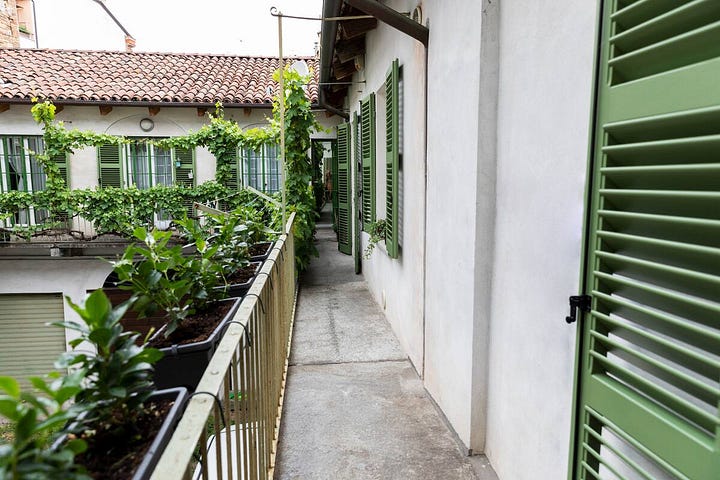
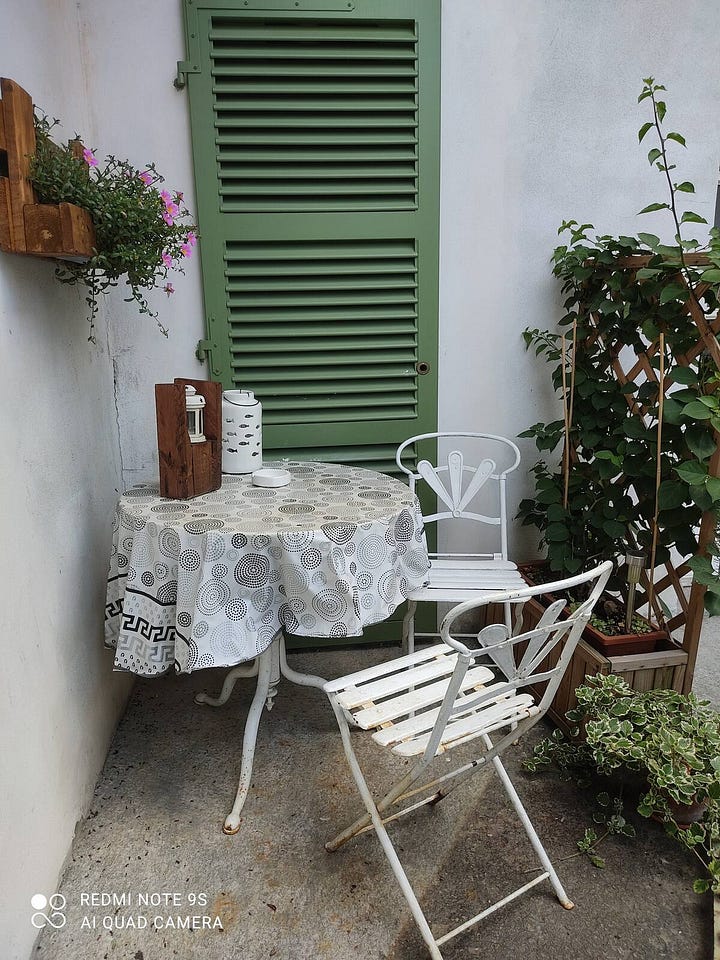
Postscript
If you like what you read, PLEASE subscribe. Knowing that people are electively signing up to read my writing is the biggest compliment and encourages me to write more. I don’t plan on putting up a pay-wall at the moment, but anything helps as far as pledges go! A few generous readers have made an annual pledge and that support means the world to me. It helps me value my writing and my time as important. The money goes towards train rides, meals and opportunities to seek out special places like the ones listed. My goal is to continuously share them with all of you.




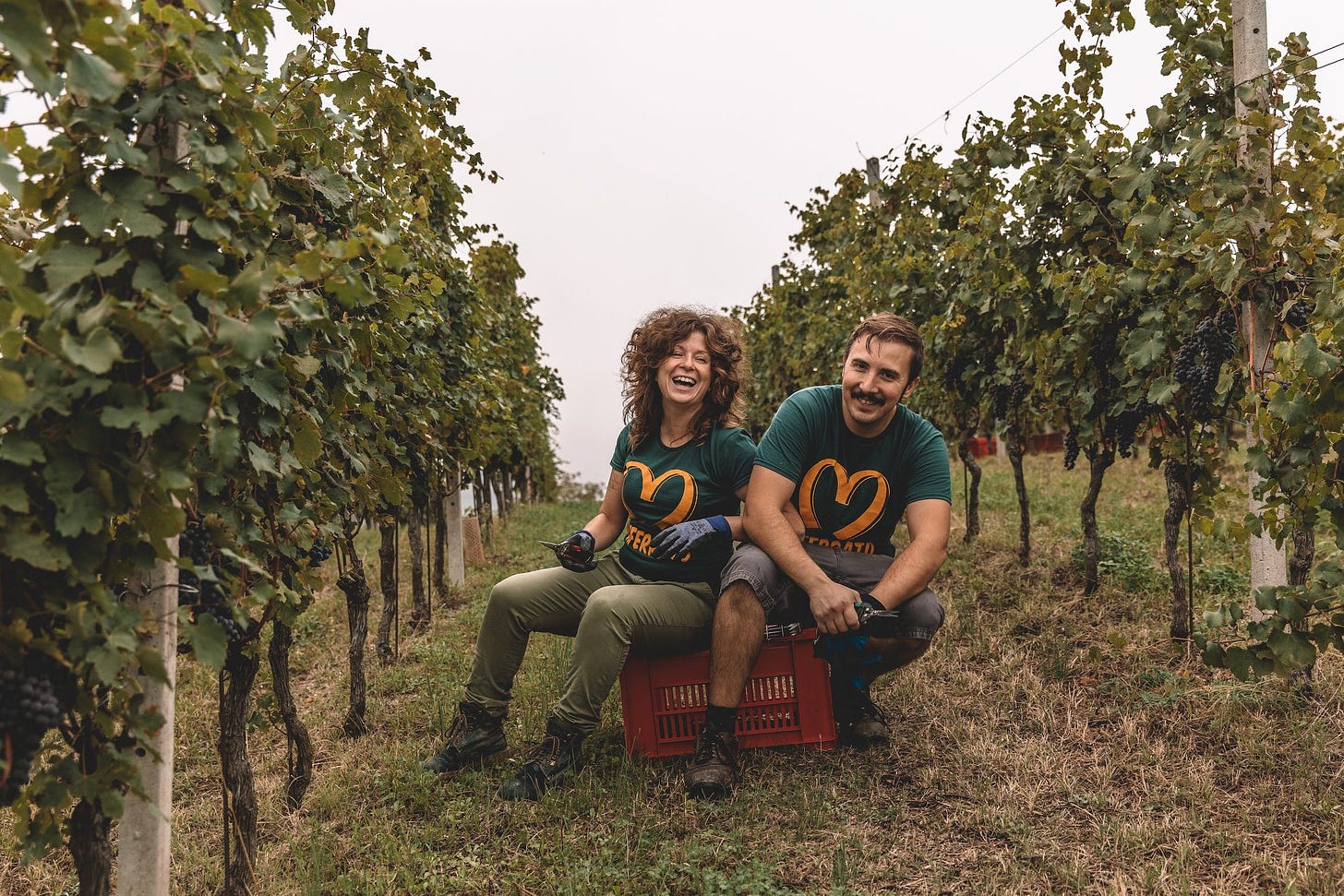
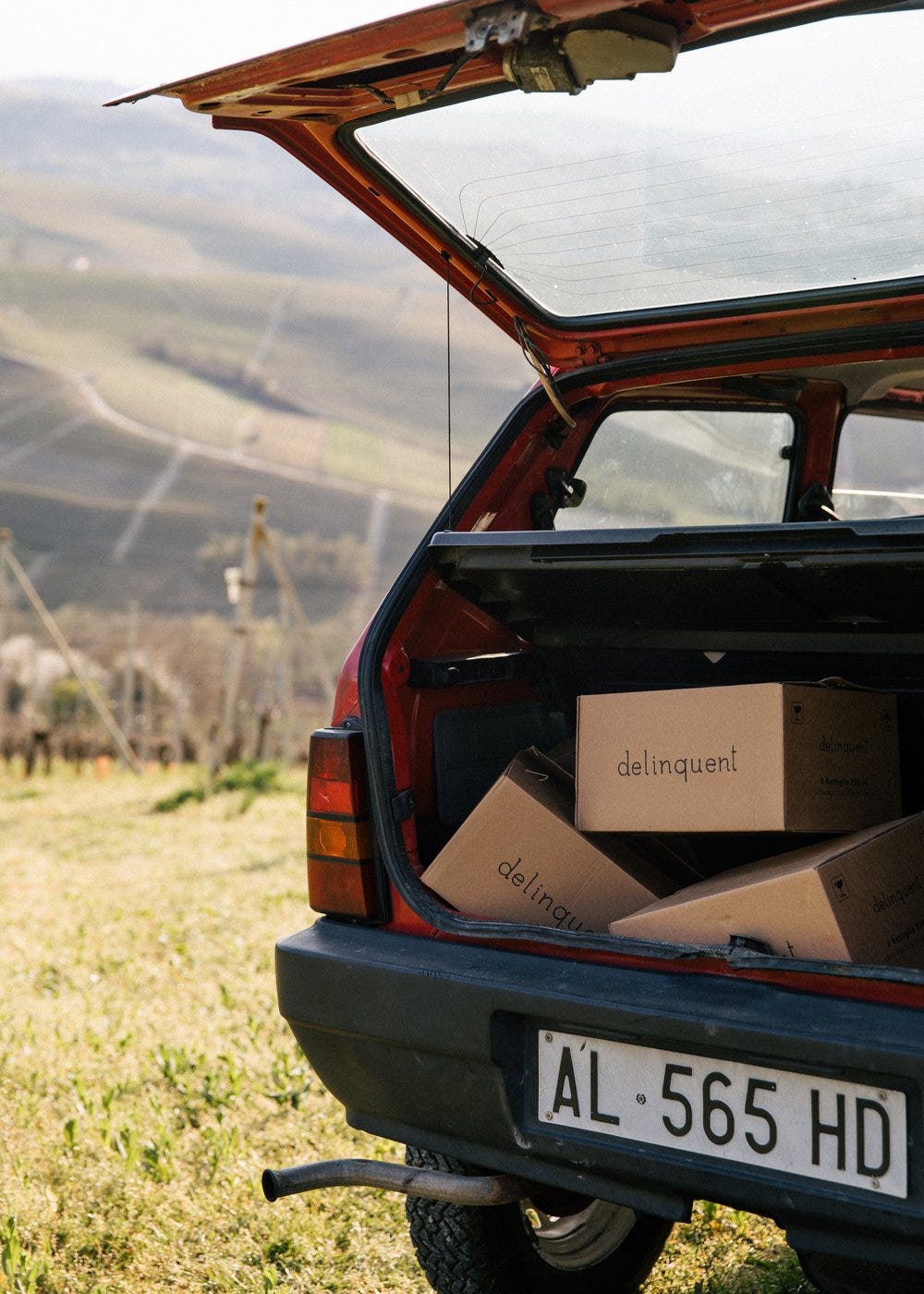

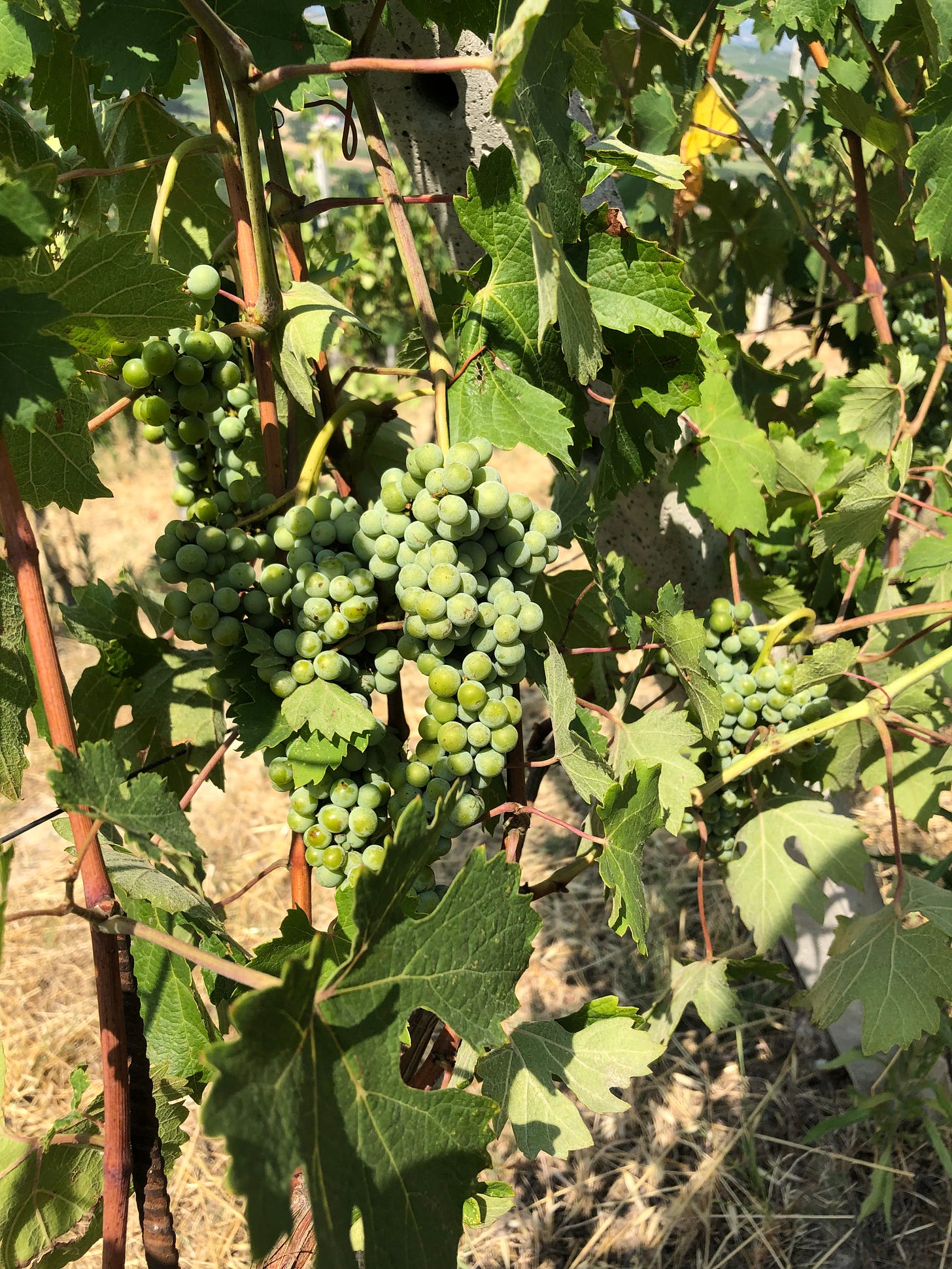

Enjoyed the story Tana. Felt as though I was with you while you discovered this delicious wine and made new friends too. Keep doing what you love it is the true way to happiness.
Cheers.